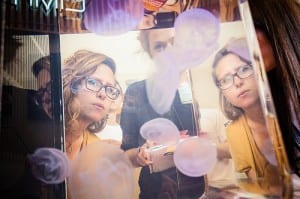Medical imaging with light, sound and sugar (!) at the Royal Summer Science Exhibition
By Thomas A Roberts, on 9 July 2014
Have you ever broken a bone and been for an MRI scan? Perhaps your dentist has interrogated your fillings with an x-ray of your jaw. Or maybe you’ve seen a baby curled in its mother’s womb on an ultrasound machine. Medical imaging has revolutionised our lives to the point where we can see inside our bodies with incredible clarity. But now a new wave of imaging techniques is coming.
x-ray of your jaw. Or maybe you’ve seen a baby curled in its mother’s womb on an ultrasound machine. Medical imaging has revolutionised our lives to the point where we can see inside our bodies with incredible clarity. But now a new wave of imaging techniques is coming.
Now, we can use light to illuminate deep inside our bodies to see individual, microscopic cells dividing. We can use sound to generate exquisitely detailed images of blood vessels. And, we can even use sugar to make tumours within our bodies glow.
At this year’s Royal Society Summer Science Exhibition, held last week, my colleagues and I from the UCL Centre for Advanced Biomedical Imaging (CABI) exhibited the next generation of techniques that we are developing in our lab which push the boundaries of what we can see inside the human body. Having conquered the Cheltenham Science Festival, the CABI team showcased a completely new exhibition.
 Close
Close



